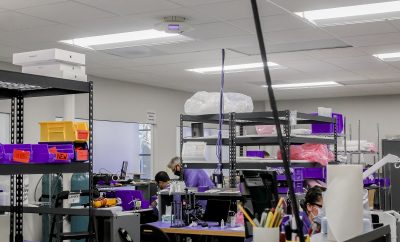
News
Scientists Have Found a Way to Translate Thoughts Into Computer-Generated Speech
Scientists have developed a groundbreaking device that is capable of translating thoughts into natural sounding speech. Researchers from the University of California, San Francisco, designed the device to help restore speech in people who have suffered paralysis or severe neurological damage.
The device works by using a proprietary brain-computer interface that, when connected to a person, it decodes speech by matching brain signals to physical movements that are initiated in the larynx, jaw, lips, and tongue. This data is collected by the computer and translated into spoken words.
This a major improvement over previous iterations of similar technology, which typically focused on typing, only allowing people to type a maximum of 10 words per minute, a far-cry behind the average speaking speed of around 150-words per minute.
Researchers involved in the project say that this computer system would be a major breakthrough in restoring the speech capability of people who have been unable to communicate comfortably and effectively. Eventually, researchers hope for the device to completely reproduce the “musicality” of the human voice, even conveying the nuances of emotions and personality in speech.
“This is an exhilarating proof of principle that with technology that is already within reach, we should be able to build a device that is clinically viable in patients with speech loss,” Edward Chang, a professor of neurological survey and the study’s senior author, said in a press release.
So far, the research has increased exponentially in successfully matching the words generated by the computer matching the thoughts of those involved in the study. By linking brain activity to movements in the mouth and throat during speech, this technology has achieved a breakthrough unlike anything seen before in this field.
“We still have a way to go to perfectly mimic spoken language,” said Josh Chartier, a bioengineering graduate student who worked on the research. Still, the levels of accuracy we produced here would be an amazing improvement in real-time communication compared to what’s currently available.”





0 comments